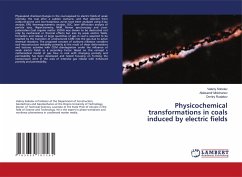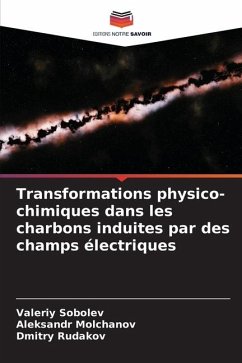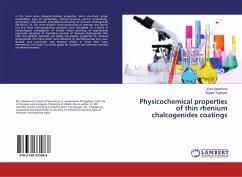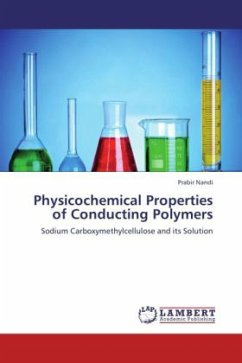
Physicochemical transformations in coals induced by electric fields
Versandkostenfrei!
Versandfertig in 6-10 Tagen
16,99 €
inkl. MwSt.

PAYBACK Punkte
8 °P sammeln!
Physicaland chemical changes in the coal exposed to electric fields of weak intensity, the coal after a sudden outburst, and that selected from outburst-prone and non-hazardous zones have been analyzed using X-ray analysis, EPR, thermogravimetric analysis, DSC, laser diffraction analysis of particle sizes, IRspectrometry, NMR, Raman spectroscopy and cross-polarization.Coal organic matter (COM) was shown to be destructed not only by mechanical or thermal effects but also by weak electric fields. Formation and release of large quantities of gas in coal is assumed to be resulted by the transition...
Physicaland chemical changes in the coal exposed to electric fields of weak intensity, the coal after a sudden outburst, and that selected from outburst-prone and non-hazardous zones have been analyzed using X-ray analysis, EPR, thermogravimetric analysis, DSC, laser diffraction analysis of particle sizes, IRspectrometry, NMR, Raman spectroscopy and cross-polarization.Coal organic matter (COM) was shown to be destructed not only by mechanical or thermal effects but also by weak electric fields. Formation and release of large quantities of gas in coal is assumed to be resulted by the transition of unstructured COM into the gas due to active chemical reactions. The proposed concept of outburst initiation considers coal microstructure instability primarily as the result of shear deformations and tectonic activities with COM disintegration under the influence of weak electric fields as a secondary factor. Based on this concept a mathematical model of gas flow in coal with changing porosity and permeability has been developed and tested focusing on forming the overpressure zone in the area of intensive gas release with enhanced porosity and permeability.












